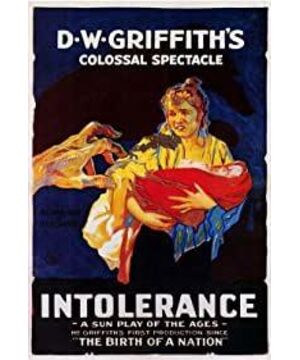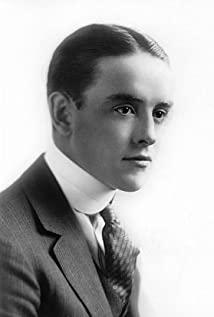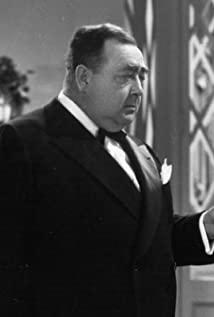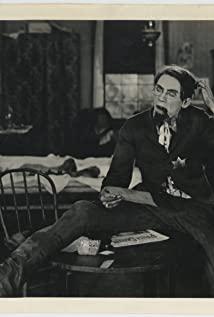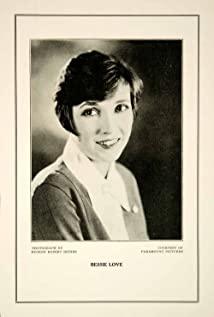"Party to Fight Differing" has reached the first-class level at that time and even in the entire film history in all aspects.
Theme: The core theme is tolerance, as its English title states, Love and the Struggle of Insularity through Time. And I have to say that the Chinese title is impressive in both form and spirit. Such a theme is a bit big, but it's worthy of the super-long length (Dammygirl says there is also a 220-minute version), grand scenes, and cutting-edge editing at the time. As soon as someone said it, I found out that the style of this film is not "Cloud Atlas"? Is it different from "Cloud Atlas"? Thinking of this, it is self-evident that the theme of "Party Dissent" is avant-garde. The lines of "Cloud Atlas" have been emphasizing the huge impact brought about by the choice of a specific time and space. In fact, it is selling the key. To put it bluntly, no matter when you face evil forces, you must always make the most correct choice, choose resistance, courage and freedom, after all You cannot predict the future. In the narrative context of "Party and Diversity", the theme is similar, but Griffith added an ideal picture of "the world is united" at the end, which is a bit cliché.
Plot: Although the four stories in the film serve the theme, in fact, the four stories are very distinctive, and each story can later be made into a genre film. "Mother and the Law" is a typical story about the fate of little people in the context of capitalist economic and social crisis, and it has become the prototype of a drama film. Worker strikes, death, love, the good guy being framed by the bad guy, and the ultimate rescue, these elements later formed key elements of the stories of Modern Times and Metropolis. "Mother and the Law" is the most mature of the four stories in narrative, and it can be said that it is not inferior to the two just mentioned. The most classic part of the "Mother and the Law" law is that the child was taken away, and the last part was rescued by the train. It is still so disturbing to take it now.
"The Massacre of the Hugo Party" is the prototype of a historical film, but it doesn't take up much content in this version, and the plot is relatively simple. But still choose the mode of the little people in the big historical events. The story of "Jesus" is the prototype of the biblical film, because this story has become a classic and it is difficult to change it. Different interpretations of Jesus. More importantly, as a film of the early 20th century, Griffith boldly juxtaposes the mythical figure of Jesus with other real-world characters to highlight his theme. It also shows the strictness of the US imperialist film censorship system.
The story of "The Fall of Babylon" is also very exciting, and it has become the prototype of later war films and epic films. First of all, it shows the main characters and battlefield situations of both sides of the war very well, which is the usual method in later epic films. The place where this story transcends the times is that it chose a mountain girl who had nothing to do with the war, and ultimately affected the development of the war to a certain extent. Isn't this a story you only see in anti-genre movies? There's even a touch of legend. This is also the most narrative tension part of the story. Of course, the two turning points in the battle are also very catchy.
Structure and Montage: The structure of the film is similar to Cloud Atlas, the most obvious being the abuse of parallel montage. Due to the lack of mature narrative clues and visual markers, such a method is still difficult to understand even for audiences with very rich movie viewing experience. However, Griffith's skillful and appropriate use of other such as cross montage, contrast montage, metaphor montage, etc. is also enough to be admired by the world. For example, the cross-cut clip of the final rescue chase, the mother's heartbreak in "Mother and Law" and the hedonic clip of the uplifter organization, and the recurring clip of the mother and the cradle, and so on. Another structural feature of "Party to Fight Differing" is the balance of stability and instability in the structure. Gerry about the version: First, I watched a 123-minute version on Youku. The quality and duration of the picture affected the understanding of the plot. After watching it for ten minutes, I didn’t understand anything. So I went to a 175-minute high-definition version, and the effect was very good.
"Party to Fight Differing" has reached the first-class level at that time and even in the entire film history in all aspects.
Theme: The core theme is tolerance, as its English title states, Love and the Struggle of Insularity through Time. And I have to say that the Chinese title is impressive in both form and spirit. Such a theme is a bit big, but it's worthy of the super-long length (Dammygirl says there is also a 220-minute version), grand scenes, and cutting-edge editing at the time. As soon as someone said it, I found out that the style of this film is not "Cloud Atlas"? Is it different from "Cloud Atlas"? Thinking of this, it is self-evident that the theme of "Party Dissent" is avant-garde. The lines of "Cloud Atlas" have been emphasizing the huge impact brought about by the choice of a specific time and space. In fact, it is selling out. To put it bluntly, no matter when you face evil forces, you must always make the most correct choice, choose resistance, courage and freedom. After all, You cannot predict the future. In the narrative context of "Party and Diversity", the theme is similar, but Griffith added an ideal picture of "the world is united" at the end, which is a bit cliché.
Plot: Although the four stories in the film serve the theme, in fact, the four stories are very distinctive, and each story can later be made into a genre film. "Mother and the Law" is a typical story about the fate of little people in the context of capitalist economic and social crisis, and it has become the prototype of a drama film. Worker strikes, death, love, the good guy being framed by the bad guy, and the ultimate rescue, these elements later formed key elements of the stories of Modern Times and Metropolis. "Mother and the Law" is the most mature of the four stories in narrative, and it can be said that it is not inferior to the two just mentioned. The most classic part of the "Mother and the Law" law is that the child was taken away, and the last part was rescued by the train. It is still so disturbing to take it now.
"The Massacre of the Hugo Party" is the prototype of a historical film, but it doesn't take up much content in this version, and the plot is relatively simple. But still choose the mode of the little people in the big historical events. The story of "Jesus" is the prototype of the biblical film, because this story has become a classic and it is difficult to change it. Different interpretations of Jesus. More importantly, as a film of the early 20th century, Griffith boldly juxtaposes the mythical figure of Jesus with other real-world characters to highlight his theme. It also shows the strictness of the US imperialist film censorship system.
The story of "The Fall of Babylon" is also very exciting, and it has become the prototype of later war films and epic films. First of all, it shows the main characters and battlefield situations of both sides of the war very well, which is the usual method in later epic films. The place where this story transcends the times is that it chose a mountain girl who had nothing to do with the war, and ultimately affected the development of the war to a certain extent. Isn't this a story you only see in anti-genre movies? There's even a touch of legend. This is also the most narrative tension part of the story. Of course, the two turning points in the battle are also very catchy.
Structure and Montage: The structure of the film is similar to Cloud Atlas, the most obvious being the abuse of parallel montage. Due to the lack of mature narrative clues and visual markers, such a method is still difficult to understand even for audiences with very rich movie viewing experience. However, Griffith's skillful and appropriate use of other such as cross montage, contrast montage, metaphor montage, etc. is also enough to be admired by the world. For example, the cross-cut clip of the final rescue chase, the mother's heartbreak in "Mother and Law" and the hedonic clip of the uplifter organization, and the recurring clip of the mother and the cradle, and so on. Another structural feature of "Party to Fight Differing" is the balance of stability and instability in the structure. Griffith first set each story within a historical framework, and then tried to break through or re-narrative through an unstable element, even in the "Jesus" paragraph also added a female important role.
Rhythm: The rhythm of the film is relatively conservative. The four stories are basically based on a story point at the beginning, and then the story develops, climaxes, and ends. Compatible with montage techniques. The use of insert shots moderates the pacing of the film appropriately.
Lens: The main lens (panoramic lens) is mainly used, and the characters also maintain the traditional standing position at that time, but some close-ups and close-ups are very visually impactful in this case. And some grand scenes use lift lenses, there are a few panoramic lenses and sliding lenses, just right.
Costumes and props scene: super-class without explanation, golden armor, gorgeous and complicated royal costumes, shocking carnival feasts and bloody wars, fire-breathing war machines, siege towers, catapults, all are vivid. I don't know if this is the first time that Babylonian civilization has been brought to the attention of Western audiences. This not only shows that the various types of work in the Hollywood film industry have reached the leading level at that time, but also expresses the director's attitude of respecting history and reality. We Fez first set each story within a historical framework, and then tried to break through or re-narrative through a certain unstable element, even in the "Jesus" section, we also added an important female role.
Rhythm: The rhythm of the film is relatively conservative. The four stories are basically based on a story point at the beginning, and then the story develops, climaxes, and ends. Compatible with montage techniques. The use of insert shots moderates the pacing of the film appropriately.
Lens: The main lens (panoramic lens) is mainly used, and the characters also maintain the traditional standing position at that time, but some close-ups and close-ups are very visually impactful in this case. And some grand scenes use lift lenses, there are a few panoramic lenses and sliding lenses, just right.
Costumes and props scene: super-class without explanation, golden armor, gorgeous and complicated royal costumes, shocking carnival feasts and bloody wars, fire-breathing war machines, siege towers, catapults, all are vivid. I don't know if this is the first time that Babylonian civilization has been brought to the attention of Western audiences. This not only shows that various types of work in the Hollywood film industry have reached the leading level at that time, but also expresses a gesture of respect for history by the director. In this regard, I am more impressed by Lou Ye's "Summer Palace". They put a lot of thought into preparing the costumes of the late 1980s.
Picture: full film dyeing to express picture information, to render emotions, and the choice of some colors even touched the effect of creating artistic conception (for example, the last part of the film's illusion and the relationship between men and women in "Mother and the Law")
. The error of the times, this error is just like the name of the movie, the same party fights against the difference. However, a long time has corrected this error, and Griffith is reunited with today's fans.
View more about Intolerance reviews


